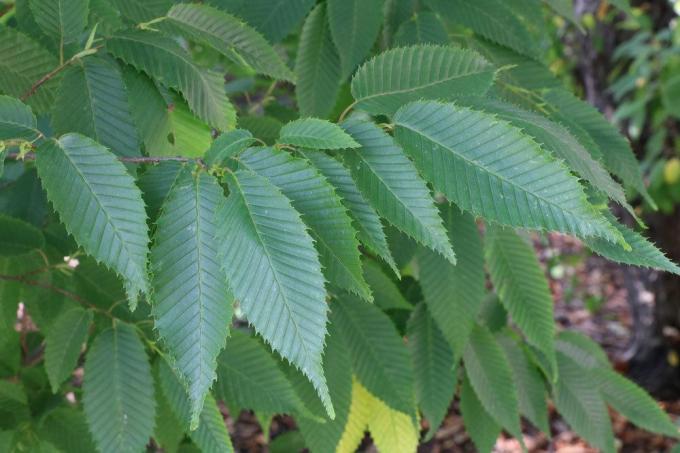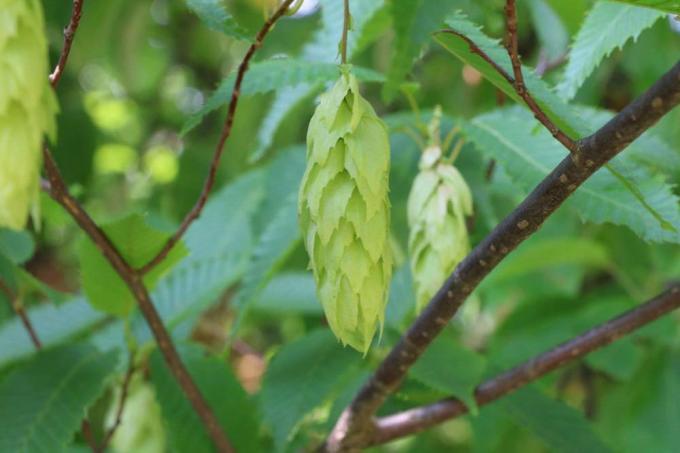
table of contents
- Young cutting hedges
- Annual pruning
- Taper cut
- Topiary
- Radical cut
- tool
Anyone who has a hornbeam hedge in the garden knows this, it sprouts strongly. Therefore, it has to be pruned regularly. But when is the right time for the young or the older hedges and how is the appropriate cut made. Because even growth can only take place through precise pruning, so that the hornbeam hedge also becomes an eye-catcher. Instructions for the correct cutting and trimming are given here in the following post.
Young cutting hedges
If the hornbeam hedge was newly laid out, it should serve as a privacy screen and therefore ideally be leafy down to the ground. So that the hedge also gets its special hedge shape after the individual hornbeam plants have been planted In the beginning, it is especially important to have the right cut so that it grows the way the hobby gardener wants it.
Especially with the young plants, they have to be trained by a continuous cut in the first two to three years. Therefore, pruning should not be omitted immediately after planting and should therefore be proceeded as follows.

- Promote branching
- for this, strong cutbacks at the beginning are important
- Cut immediately after planting
- here cut the unbranched tips by half
- Shorten the shoots growing upwards and outwards several times a year
- the young hedges can be pruned up to six times a year
- this is used for tightness
- even if the desired external dimensions of the hedge have not yet been achieved
Even if the newly planted hornbeam hedge is still far from the desired height, it must be cut regularly. Because those who let the new shoots grow upwards unhindered to a certain height quickly will find that these hedges have the desired tightness in the shortest possible time is missing.
In this way, many holes are created, so that privacy protection is no longer available. The hornbeam is a fast-growing plant and the trimmed shoots also grow back quickly. Will follow the guidelines for the repeated pruning of a young hornbeam hedge kept, this will be a perfect and tight privacy screen from the ground up in three years at the latest to the height.
Annual pruning
The older hornbeam hedge also needs pruning every now and then, because Carpinus betulus is sprouting heavily. In order to ensure even and beautiful growth here too, the older hedges should be cut twice a year. The first cut is made in spring, between February and March.

The second cut, on the other hand, is carried out in the summer in August or September, so the plant still has time to close its cut wounds until the first frost. When pruning the hornbeam hedge, the following instructions should be followed.
- For the shape cut, cut off the branches up to the second or third eye from the shoot base
- do not blend to the first eye
- so no new shoots can form
- only remove shoots that grow inwards
- likewise instincts that cross
- the main shoot is shortened to 15 cm above the side shoots
The first cut in the year can be a little stronger, the second cut in summer is used to remove the shoots that have grown out of the hedge over the course of the year. In autumn the hedges are therefore only cut into shape, in spring they can also be thinned out from the inside.
Taper cut
Very old hedges in particular need rejuvenation pruning every few years. This pruning is usually done in late August or early September, when birds are no longer nesting in the hedges and could be disturbed.
The taper cut should be done as follows:
- remove any old branches inside
- make the cut here directly under a branch
- this serves to stimulate new shoots
Don't be frightened if the hornbeam hedge looks “plucked” after the rejuvenation cut. But the hobby gardener cannot mix up with Carpinus betulus. New shoots quickly grow back and the hedges quickly become green and dense again.
Topiary
The hornbeam is also great for topiary cutting. For example, the hedge cannot end smoothly at the top but in a round shape. The cut can therefore take any shape you like. Using a pre-made template, for example, cut a piece of cardboard into a semicircle for the round one Shape or a wire mesh from the gardening trade, the hornbeam can have almost any desired shape accept. However, the hobby gardener needs a little practice to do this.
Radical cut
When should a hornbeam be radically shortened, when should this cut be made? Normally, a hornbeam hedge can be cut back radically at any time, because it is easy to cut and will sprout again after a short time.

However, it must be noted that between 01.03. and the 30.09. of each year according to the Federal Nature Conservation Act §39 Para. 3 No radical cuts are allowed in order not to disturb or chase away breeding birds that may have taken up residence in the hedge. During this time, only smaller shape and care cuts may be made.
However, there are reasons that lead to a radical cut in Carpinus betulus:
- when the hornbeam compacts after planting
- when the hedges have become too wide or too high
- to rejuvenate an old hedge
- to remove diseased shoots
- with a topiary
All this work should therefore be carried out in February or after October. However, so that the plants do not suffer frost damage at the interfaces and get away from that before winter radically carried out blending should always be carried out in late winter before March will. In this way, the law can be complied with and the hornbeams have the opportunity to cope with the cut well and to close and compensate the interfaces over the warm summer months.
tool
The right tool is important so that the plants are not damaged when they are cut. Above all, the devices used must be clean and sharp. Ideally, the blades are disinfected before starting work. This can be done with pure alcohol from the pharmacy, but the well-stocked gardening trade also offers disinfectants for this.
If the cutting devices are not clean, bacteria and diseases can be transmitted that can penetrate the fresh interface and thus damage the plant. If blunt knives or scissors are used, this is not only harmful to the hornbeams, where the branches are not cut cleanly but rather torn off uncleanly. There can also be an increased risk of accidents for the hobby gardener if unsharp tools are used.

The following devices are ideal for pruning the hornbeam hedges:
- Rose scissors
- suitable for thin, young shoots at eye level
- manual hedge trimmer
- long handles and telescopic pull-out make work above the head easier
- you don't have to bend down to the floor either
- Loppers
- is used for stronger, older and already lignified branches
- motorized hedge trimmer
- ideally use with battery
- Well suited for contour cutting from the outside
- petrol powered hedge trimmer
- for gardens without electricity
